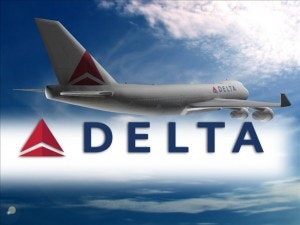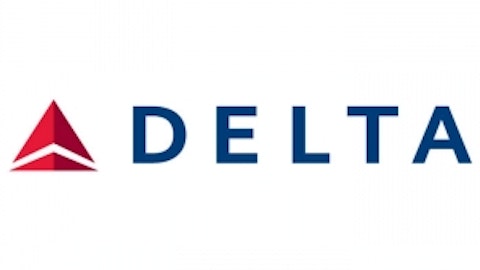Throughout the 1990s and early 2000s, the U.S. airline industry experienced a dramatic shift as smaller planes – so-called regional jets – became a prominent part of the domestic fleet. Many of these regional jets had 50 or fewer seats, and allowed the large network carriers to offer relatively frequent flights to small cities throughout the country. In most cases, these regional jets replaced larger “mainline” jets that had previously done that flying.
However, skyrocketing fuel prices and labor costs have significantly changed the calculus for airlines in the past five years or so. Small regional jets have become uneconomical, leading most network carriers to reduce their reliance on them: Delta Air Lines, Inc. (NYSE:DAL) has been leading the way in that movement. Even small mainline aircraft are becoming less fashionable. Furthermore, airlines are finding ways to add more seats to the ones that do remain in service.

The increasing trend toward “upgauging” is beginning to improve the cost structures of many airlines, improving profitability. Yet the medium-term outlook is not as rosy. Even though most airlines are keeping their fleet sizes flat, the industrywide shift to larger aircraft will add a lot of new seats to particular markets. This is likely to create a long-term drag on unit revenues that could outweigh the cost savings and hurt future profitability.
A sea change in the air
The move to larger aircraft – and the addition of extra seats on existing aircraft – is almost universal in the U.S. airline industry today. For more than a decade, Southwest Airlines Co. (NYSE:LUV) was only buying one airplane model: The Boeing Company (NYSE:BA) 737-700, configured with 137 seats. However, in late 2010, the company converted part of its order to the larger 737-800, outfitted with 175 seats. The 737-800s began arriving last year, at which time Southwest Airlines Co. (NYSE:LUV) also began a project to add six seats to most of its 137-seat aircraft.
Southwest Airlines Co. (NYSE:LUV) took delivery of 34 737-800s in 2012, and has firm orders for another 44 737-800s through the end of 2014, plus the option to upgrade other future 737 orders to the 800 model. These 175-seat planes will add significant capacity to some routes, as they replace older Boeing 737-300 aircraft with 137 seats, as well as AirTran’s fleet of 88 Boeing 717s, which have only 117 seats.
The AirTran 717s, in turn, are being leased to Delta Air Lines, Inc. (NYSE:DAL) beginning later this year. Delta Air Lines, Inc. (NYSE:DAL) will use some of these planes (which will be reconfigured to have 110 seats) to replace similarly sized DC-9s that are retiring, but for the most part they will replace 50-seat regional jets.
The transition of 717s from Southwest Airlines Co. (NYSE:LUV) to Delta Air Lines, Inc. (NYSE:DAL) is thus allowing both carriers to increase their average aircraft size.
Other carriers are getting into the game, too. JetBlue Airways Corporation (NASDAQ:JBLU) has historically operated a fleet of 150-seat Airbus A320s and 100-seat Embraer SA (ADR) (NYSE:ERJ) E190s. However, this fall the carrier will begin taking delivery of 190-seat Airbus A321s (the largest narrowbody aircraft currently in production). Management is very excited about the potential for these larger aircraft to lower unit costs over the next few years. JetBlue Airways Corporation (NASDAQ:JBLU) plans to add 30 A321s to its fleet, and has scaled back the growth of its E190 fleet to accommodate the A321.
Competition will intensify
The upshot of all the activity currently taking place is that the average domestic aircraft will be noticeably bigger in a few years. This will allow the airlines to reduce unit costs, but given that the market is not growing significantly, they may have trouble filling these extra seats at rational prices. While the airline industry has been very successful at raising prices in the past few years, most carriers began seeing patches of demand weakness last month.
Airline executives still talk about capacity discipline, but the shift toward larger planes is adding a significant number of additional seats to certain markets, even if system capacity growth is small. In an environment where pricing is already starting to break down, this excess capacity could cause unit revenues to drop just as quickly as unit costs. Airline investors should keep a close eye on this process as it plays out, as it represents a significant risk to most U.S. airlines.
The article Is Big the New Small in the Airline Industry? originally appeared on Fool.com is written by Adam Levine-Weinberg.
Motley Fool contributor Adam Levine-Weinberg has no position in any stocks mentioned. The Motley Fool recommends Southwest Airlines.
Copyright © 1995 – 2013 The Motley Fool, LLC. All rights reserved. The Motley Fool has a disclosure policy.

